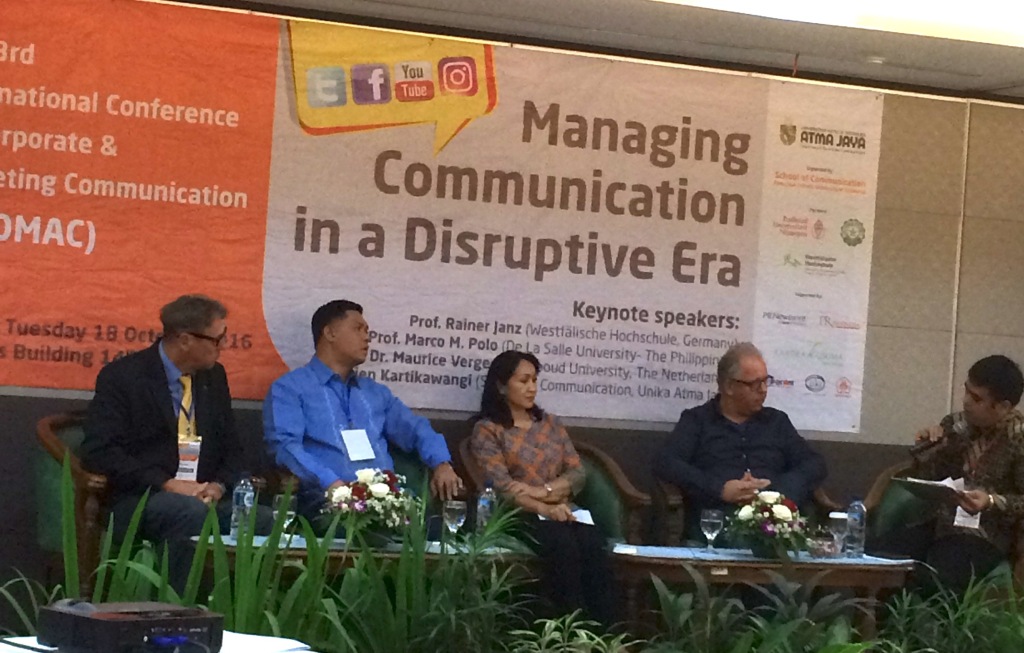
This paper is published in the Proceeding Book “Managing communication in a disruptive era” (p. 73-86), by Atma Jaya Catholic University of Indonesia in Jakarta on April 2017.
It discusses the socio-cultural aspects of uses of geolocation (the case of Facebook Places application), and inspects the “editorial content” of urban space through location-marking services.
Geolocation associates territories and networks, the material and the immaterial, analog and digital. Hybridization of space also requires consideration of the body, of the disembodied identity and of the inter-spatiality. But does the use of these location-based applications consist only of curiosity to know where the other is, or does it make part of the construction of identity in the digital environment? Does publicly disclosing our movements count as an act of showing off, of linking relationships, or is it simply a form of expressing the link between the spatial dimensions of the action?
By exploring and listing all existing places, the “urban explorers” discover, unmask and reveal relationships and places, sometimes hidden to the eyes of all. They move entire parts of a city from Nature to Culture.

